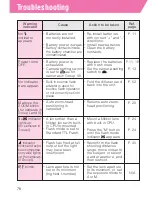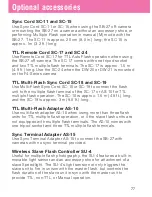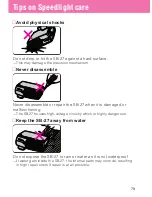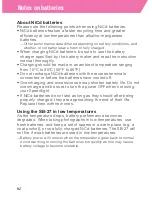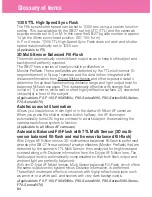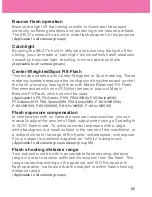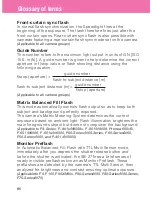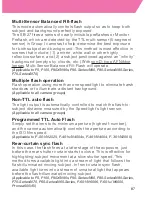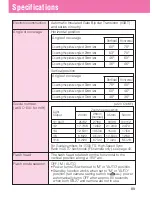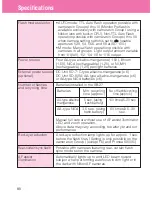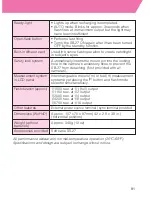
87
Multi-Sensor Balanced Fill-flash
This mode automatically controls flash output so as to keep both
subject and background perfectly exposed.
The SB-27 fires a series of nearly invisible preflashes or Monitor
Preflash, which are detected by the TTL multi-sensor (5-segment
sensor) in Group I cameras to help determine the best exposure
for both subject and background. This method is most effective in
scenes that include: (1) a mirror, white wall or other highly
reflective surface, and (2) a subject positioned against an “infinity”
background (empty sky, clouds, etc.) With non-D-type AF Nikkor
lenses, Multi-Sensor Balanced Fill-Flash will operate.
(Applicable to F5, F100, F90X/N90s, F90-Series/N90, F80-Series/N80-Series,
F70-Series/N70)
Multiple flash operation
Flash operation using more than one speedlight to eliminate harsh
shadows or to illuminate a distant background.
(Applicable to all camera groups)
Non-TTL auto flash
The light output is automatically controlled to match the flash-to-
subject distance measured by the Speedlight’s light sensor.
(Applicable to all camera groups)
Programmed TTL Auto Flash
Simply set the lens to its minimum aperture (highest f-number),
and the camera automatically controls the aperture according to
the ISO film speed.
(Applicable to F-501/N2020, F-401s/N4004s, F-401/N4004, F-301/N2000)
Rear-curtain sync flash
In this case, the flash fires at a later stage of the exposure, just
before the rear shutter curtain starts to close. This is effective for
highlighting subject movement at a slow shutter speed. This
method turns available light into a stream of light that follows the
flash-illuminated moving subject. In front-curtain sync flash,
available light turns into a stream of unnatural light that appears
before the flash-illuminated moving subject.
(Applicable to F5, F100, F90X/N90s, F90-Series/N90, F80-Series/N80-Series,
F70-Series/N70, F65-Series/N65-Series, F-601/N6006, F-601
M
/ N6000,
Pronea 600i/6i)




